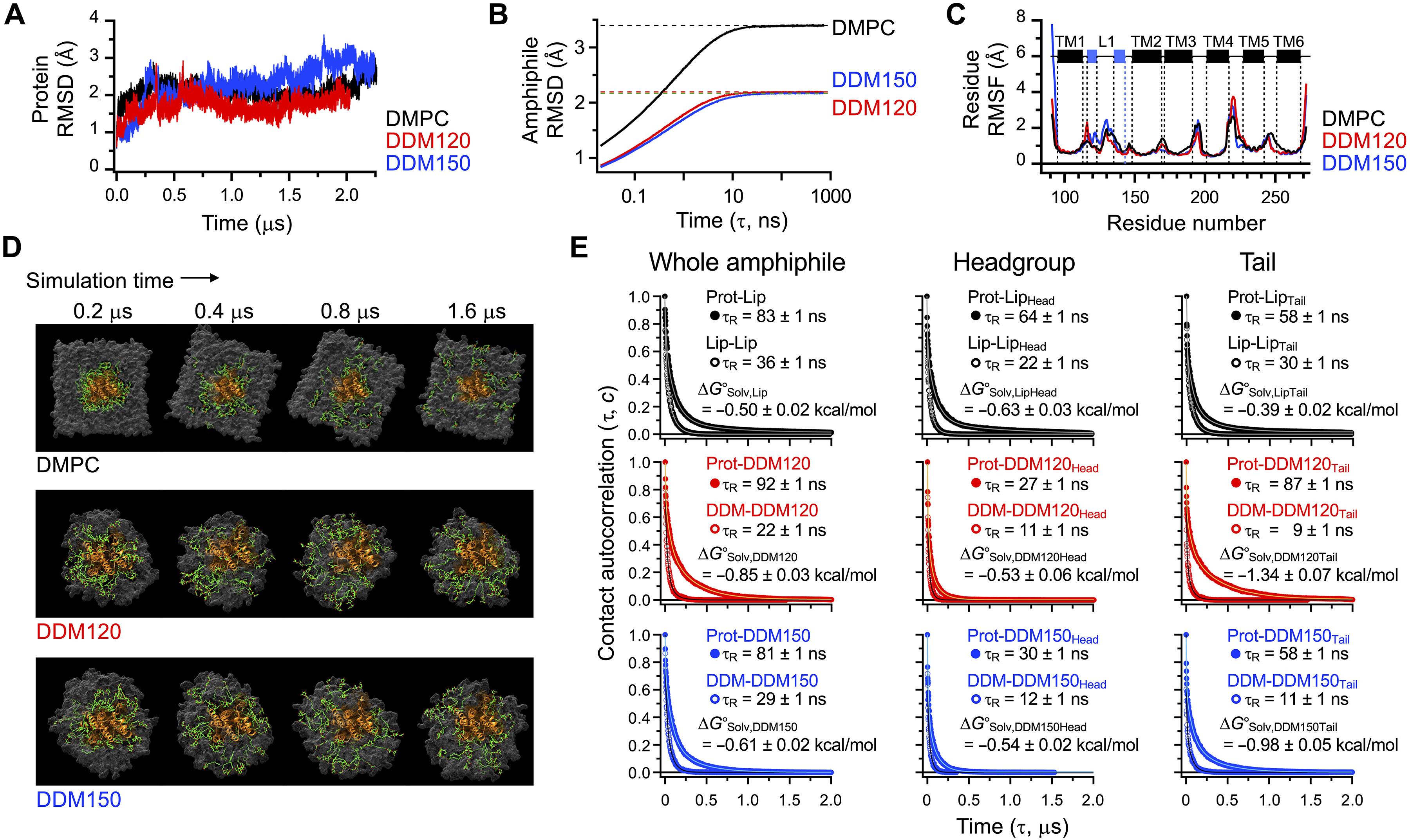脂质双分子层加强了膜蛋白的协同网络
IF 12.5
1区 综合性期刊
Q1 MULTIDISCIPLINARY SCIENCES
引用次数: 0
摘要
膜蛋白在构成细胞膜的脂质双分子层中折叠和起作用。尽管如此,它们的结构和功能可以在不同的两亲性组装体中重现,这些两亲性组装体的组成与天然膜不同。目前尚不清楚各种疏水环境是如何稳定膜蛋白的,以及与其他类型的两亲动物相比,脂质在蛋白质稳定性中是否起着独特的作用。通过对进化上不相关的α-螺旋和β-桶状膜蛋白的研究,我们发现疏水厚度和两亲组合中两亲-两亲填料的强度是蛋白质稳定性的关键决定因素。脂溶剂化通过促进残留物在蛋白质内部的埋藏来增强蛋白质的稳定性,这让人想起疏脂效应。这种脂质介导的机制也加强了协同残基相互作用网络,促进了局部结构扰动在整个蛋白质中的传播。这项研究证明了脂质溶剂化在调节膜蛋白的稳定性及其对外部刺激的反应中的关键作用。本文章由计算机程序翻译,如有差异,请以英文原文为准。

The lipid bilayer strengthens the cooperative network of membrane proteins
Membrane proteins fold and function in a lipid bilayer constituting cell membranes. Nonetheless, their structure and function can be recapitulated in diverse amphiphilic assemblies whose compositions deviate from native membranes. It remains unclear how various hydrophobic environments stabilize membrane proteins and whether lipids play any unique role in protein stability compared to other types of amphiphiles. Here, using the evolutionarily unrelated α-helical and β-barrel membrane proteins from Escherichia coli, we find that the hydrophobic thickness and the strength of amphiphile-amphiphile packing in amphiphilic assemblies are critical determinants of protein stability. Lipid solvation enhances protein stability by facilitating residue burial in the protein interior, reminiscent of the lipophobic effect. This lipid-mediated mechanism also strengthens the cooperative residue-interaction network, promoting the propagation of local structural perturbations throughout the protein. This study demonstrates the pivotal role of lipid solvation in modulating the stability of membrane proteins and their responses to external stimuli.
求助全文
通过发布文献求助,成功后即可免费获取论文全文。
去求助
来源期刊

Science Advances
综合性期刊-综合性期刊
CiteScore
21.40
自引率
1.50%
发文量
1937
审稿时长
29 weeks
期刊介绍:
Science Advances, an open-access journal by AAAS, publishes impactful research in diverse scientific areas. It aims for fair, fast, and expert peer review, providing freely accessible research to readers. Led by distinguished scientists, the journal supports AAAS's mission by extending Science magazine's capacity to identify and promote significant advances. Evolving digital publishing technologies play a crucial role in advancing AAAS's global mission for science communication and benefitting humankind.
 求助内容:
求助内容: 应助结果提醒方式:
应助结果提醒方式:


